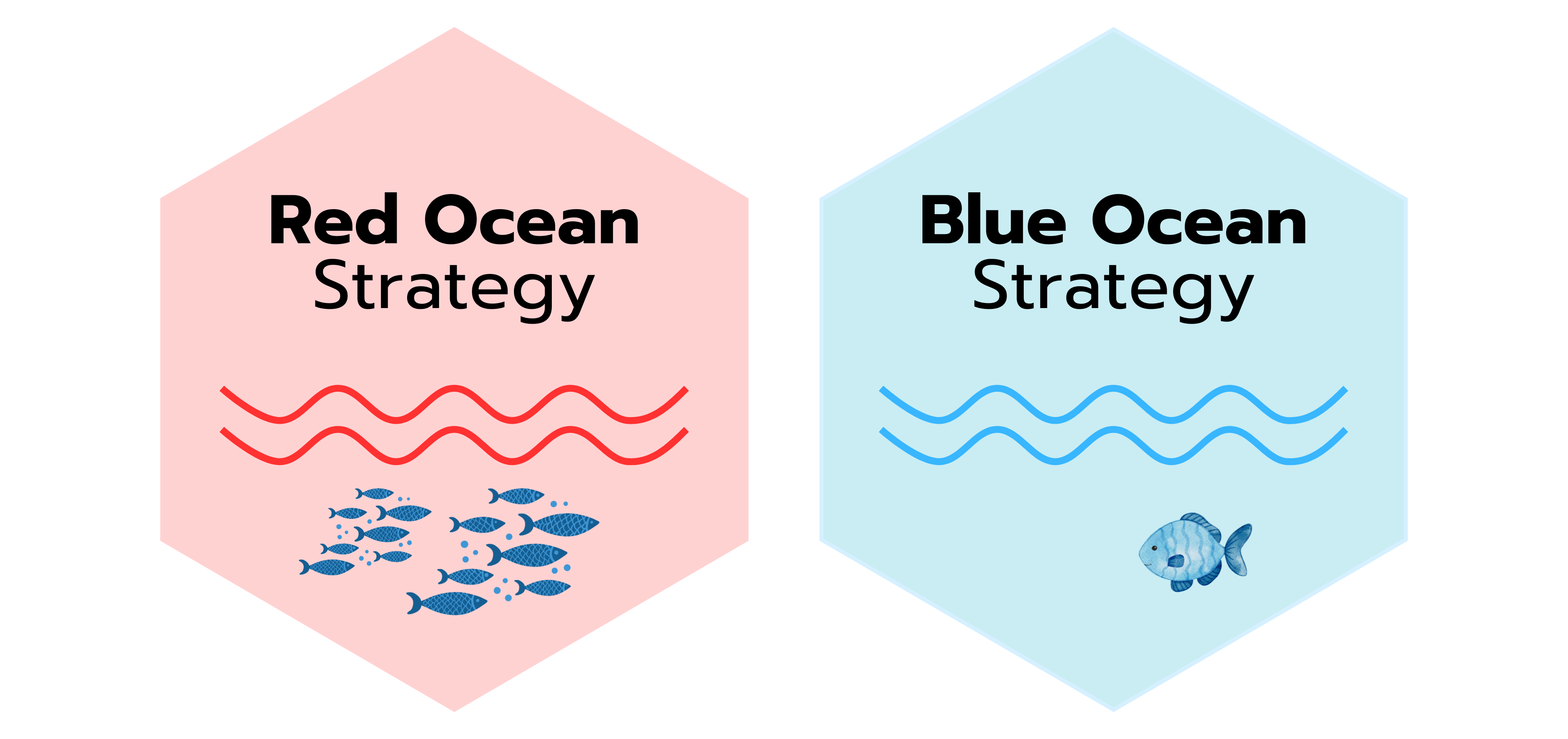The Blue Ocean Strategy, developed by W. Chan Kim and Renée Mauborgne in their book Blue Ocean Strategy (2005), turns traditional business thinking upside down. It focuses on tapping into undiscovered markets – the "blue oceans" – where companies can operate alone and avoid competition. The result? More growth and higher profits.
In contrast, the "red ocean" refers to the already overcrowded market space where competition is fierce, and companies are constantly striving to outdo each other. This often leads to declining profits and limited growth. 🌊
The Blue Ocean Strategy represents a shift away from this destructive competition towards a more constructive and creative form of market development. It encourages companies to go beyond the industry's conventional boundaries and create new markets, making competition irrelevant.

The Pros and Cons of the Blue Ocean Strategy
To fully leverage the benefits of the Blue Ocean Strategy and minimize potential risks, it is essential to understand its strengths and weaknesses:
Pros:
- Creation of New Markets: Companies that apply the Blue Ocean Strategy can build and capture new demand in unexplored markets.
- Less Competition: Since these markets are often unchallenged, there is less competition, offering greater opportunities for growth and profit.
- Encouragement of Innovation: The strategy promotes creativity and pushes companies to think beyond typical market boundaries.
Cons:
- Higher Risk: Since the markets are unexplored, there is a greater risk of failure due to unknown market dynamics and customer needs.
- Implementation Challenges: Introducing the Blue Ocean Strategy often requires deep organizational changes, which can be difficult to manage.
- Market Protection: Once a blue ocean is discovered, it may not remain secure – other companies could enter the market and increase competition.
The Blue Ocean Strategy in Consulting
For consultants, the Blue Ocean Strategy is an especially valuable concept as it offers a completely different approach to growth and competition. It helps you show your clients how to discover and build new markets that have not yet been tapped by other companies. By incorporating this approach into your consulting, you can help drive innovation and create demand that didn't exist before.
The Blue Ocean Strategy offers a creative and sustainable way to achieve long-term growth and high profitability without getting lost in the fierce competition of existing markets. For you as a consultant, this means that you are not only recommending existing solutions but also helping your clients take the next big step – into untapped markets with real opportunities.
However, this strategy is not without its challenges. It requires thorough preparation and a clear vision of how to build a new market. Careful research, thoughtful implementation, and the willingness to handle setbacks are key to ensuring long-term success.

